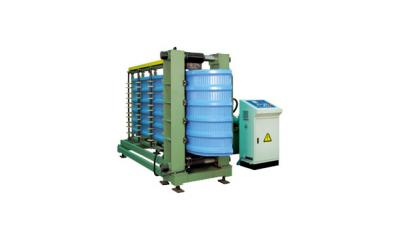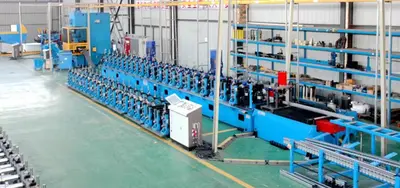Detailed Explanation of Metal Roll Forming Process
Metal rollforming equipment process refers to the process of forming various complex parts by the principle of rolling extrusion, relying on the plastic movement characteristics of the material.
1. Process features of rollforming equipment
Metal rolling deformation is linear contact, which is carried out continuously and gradually. The required deformation force is small, and one or several workpieces can be produced in one stroke. Compared with the cutting and grinding process, the rollforming equipment process not only has high production efficiency, saves materials, but also has high product strength and stable quality. This process is especially suitable for processing long and short workpieces that are difficult to cut, especially for the products with an annual output of millions of pieces. The use of rollforming equipment process is advantageous, and the economic benefits are also considerable.
Metal roll forming began in Europe approximately in the 1960s. Due to the advantages of high production efficiency, material saving, and increased product strength of rollforming equipment, it is not only used in the threaded fastener industry, but also in industrial sectors such as automobiles and bicycles to process parts with complex shapes. With the advancement of technology and the development of production, the technology of rollforming equipment has attracted more and more attention.
2. Roll forming materials in rollforming equipment
The rolling process is a cold forging process, and there are many materials that can be rolled. Among them, low-carbon steel is a commonly used material for roll forming, and non-ferrous metals are more suitable for roll forming.
3. Rollforming equipment
Metal roll forming parts are generally formed by upsetting the blank with a cold upsetting machine and then rolling with a thread rolling machine. The equipment that can perform thread rolling and roll forming includes: various reciprocating flat thread rolling machines, planetary thread rolling machines, two-cylinder thread rolling machines and three-cylinder thread rolling machines and so on, while the reciprocating flat thread rolling machine is commonly used in rollforming equipment. Therefore, for manufacturers equipped with cold heading machines and thread rolling machines, it is only a matter of designing roll forming molds.
4. Roll forming method of rollforming equipment
Metal roll forming is a relative reciprocating movement of a movable wire plate and a fixed wire plate. Roll forming is to roll different structural designs of the wire plate onto the workpiece. According to needs, various threads, convex rings, knurling, end chamfers, grooves of different depths and widths, and other shapes can be rolled out.
5. Moulds of rollforming equipment
Metal rollforming equipment is more complicated and more demanding than rolling threads. The mold design is based on the different shapes of the workpieces, the thread rolling board is designed into one section or several sections, which can be synchronized or graded. When the diameter of the blank along the axis is the same or basically the same, synchronous roll forming can be used; while the diameter of the blank along the axis is different and several different structures of diameter need to be rolled, the graded roll forming is adopted. Generally, it can be formed by one-time roll forming, and for complicated shapes, it can be formed by roll forming twice.


 CN
CN
 EN
EN
 fr
fr  de
de  es
es  it
it  ru
ru  pt
pt  ar
ar  th
th  pl
pl  ro
ro 







 Call us on:
Call us on:  Email Us:
Email Us:  #1809, Jianhu Rd, Keqiao, Shaoxing, Zhejiang, China
#1809, Jianhu Rd, Keqiao, Shaoxing, Zhejiang, China 